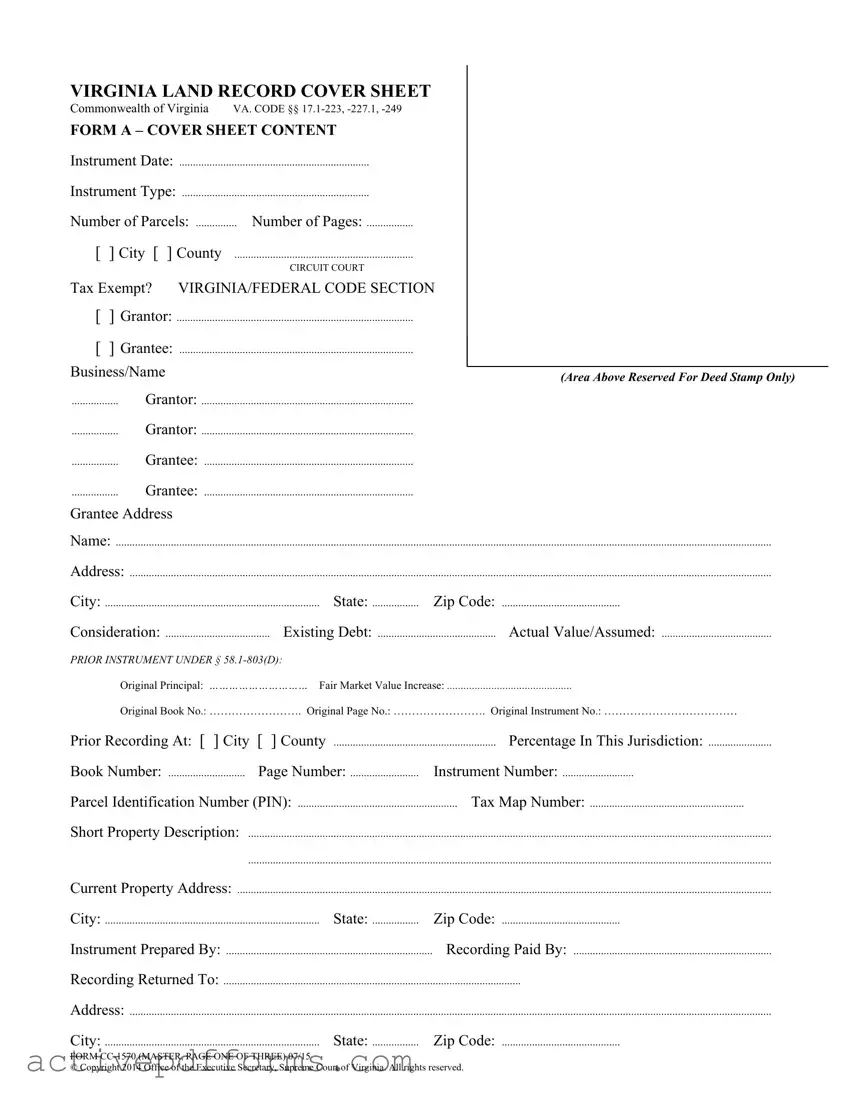Free Va Land Record Cover Sheet PDF Template
The Virginia Land Record Cover Sheet form is a critical document used in the Commonwealth of Virginia to accompany all land transactions that are to be recorded in the circuit court. It encompasses vital details such as instrument date, type, the involved parties, property description, and transaction specifics in accordance with VA. CODE §§ 17.1-223, -227.1, -249. This form streamlines the recording process by ensuring all necessary information is clearly presented and accessible.
Edit Va Land Record Cover Sheet Now



